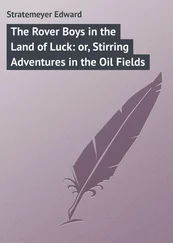Stephen Fry - The Ode Less Travelled - Unlocking The Poet Within
Здесь есть возможность читать онлайн «Stephen Fry - The Ode Less Travelled - Unlocking The Poet Within» весь текст электронной книги совершенно бесплатно (целиком полную версию без сокращений). В некоторых случаях можно слушать аудио, скачать через торрент в формате fb2 и присутствует краткое содержание. Жанр: Старинная литература, на английском языке. Описание произведения, (предисловие) а так же отзывы посетителей доступны на портале библиотеки ЛибКат.
- Название:The Ode Less Travelled: Unlocking The Poet Within
- Автор:
- Жанр:
- Год:неизвестен
- ISBN:нет данных
- Рейтинг книги:3 / 5. Голосов: 1
-
Избранное:Добавить в избранное
- Отзывы:
-
Ваша оценка:
- 60
- 1
- 2
- 3
- 4
- 5
The Ode Less Travelled: Unlocking The Poet Within: краткое содержание, описание и аннотация
Предлагаем к чтению аннотацию, описание, краткое содержание или предисловие (зависит от того, что написал сам автор книги «The Ode Less Travelled: Unlocking The Poet Within»). Если вы не нашли необходимую информацию о книге — напишите в комментариях, мы постараемся отыскать её.
The Ode Less Travelled: Unlocking The Poet Within — читать онлайн бесплатно полную книгу (весь текст) целиком
Ниже представлен текст книги, разбитый по страницам. Система сохранения места последней прочитанной страницы, позволяет с удобством читать онлайн бесплатно книгу «The Ode Less Travelled: Unlocking The Poet Within», без необходимости каждый раз заново искать на чём Вы остановились. Поставьте закладку, и сможете в любой момент перейти на страницу, на которой закончили чтение.
Интервал:
Закладка:
The structure of the PETRARCHAN SONNET, preferred and adapted by Donne, Milton and many others, is easily expressed. The first eight lines abba-abba are called the OCTAVE, the following six lines cdecde (or cddccd or cdccdc ) the SESTET.
The ninth line, the beginning of the sestet, marks what is called the VOLTA, the turn. This is the moment when a contrary point of view, a doubt or a denial, is often expressed. It is the sonnet’s pivot or fulcrum. In mine at the top of this section the ninth line begins with ‘But’, a rather obvious way of marking that moment (although you may recall Donne uses the same word in his ‘At the round earth’s imagined corners’ cited in Chapter Two). In Wordsworth’s ‘The world is too much with us’ below, the volta comes in the middle of the ninth line, at the ‘en dash’: it is precisely here, after ‘It moves us not’ that, overlooking the sea, having pondered the rush of the modern Christian world in its commerce and crassness and its blindness to nature, Wordsworth as it were draws breath and makes his point: he would rather be a pagan for whom at least nature had life and energy and meaning. A volta can be called a crisis , in its literal Greek sense of ‘turning point’ as well as sometimes bearing all the connotations we now place upon the word.The world is too much with us; late and soon, Getting and spending, we lay waste our powers: Little we see in Nature that is ours;We have given our hearts away, a sordid boon!The Sea that bares her bosom to the moon; The winds that will be howling at all hours, And are up-gathered now like sleeping flowers;For this, for everything, we are out of tune;It moves us not.–Great God! I’d rather be A Pagan suckled in a creed outworn;So might I, standing on this pleasant lea, Have glimpses that would make me less forlorn;Have sight of Proteus rising from the sea;Or hear old Triton blow his wreathèd horn.
Within the Petrarchan form’s basic octave–sestet structure there are other sub-divisions possible. Two groups of four and two of three are natural, two quatrains and two tercets if you prefer.
Here now is Shakespeare’s twenty-ninth Sonnet.When, in disgrace with Fortune and men’s eyes,I all alone beweep my outcast state,And trouble deaf heaven with my bootless cries,And look upon myself and curse my fate,Wishing me like to one more rich in hope,Featured like him, like him with friends possessed,Desiring this man’s art, and that man’s scope,With what I most enjoy contented least;Yet in these thoughts myself almost despising,Haply I think on thee, and then my state,Like to the lark at break of day arisingFrom sullen earth, sings hymns at heaven’s gate;For thy sweet love remembered such wealth brings,That then I scorn to change my state with kings.
This contains one of the strongest voltas imaginable: it arrives in the breath between Haply and I think of thee in line 10, pivoting from the very first word of the sonnet, When . The whole first part of the poem is a vast conditional clause awaiting the critical turn. But the difference in rhyme-scheme and lack of octave and sestet structure will already have shown you that, volta or no volta, this is far from a Petrarchan sonnet.
For the Tudor poets one of the disadvantages of the Petrarchan form was that abba abba requires two sets of four rhyming words. While this is a breeze in Italian where every other word seems to end - ino or - ella , it can be the very deuce in English. Drayton, Daniel and Sidney radically reshaped the rhyme-scheme, using a new structure of abab cdcd efef gg . This arrangement reached unimaginable heights in the hands of Shakespeare, after whom it is named. His great sonnets stand with Beethoven’s piano sonatas as supreme expressions of the individual human voice using and fighting the benign tyranny of form, employing form itself as a metaphor for fate and the external world. Sonata and sonnet share the same etymology, as it happens–‘little sound’. Little sounds that make a great noise.
The SHAKESPEAREAN SONNET offers, aside from less troublesome rhyming searches, twelve lines in its main body, three quatrains or two sestets and a couplet and other permutations thereof–twelve is a very factorable number. The cross-rhyming removes the characteristic nested sequence of envelope rhyming found in the Petrarchan form ( bb inside aa and the following aa inside bb ) but the reward is a new freedom and the creation of a more natural debating chamber.
For this is primarily what the Shakespearean sonnet suits so well, interior debate. I have mentioned before the three-part structure that seems so primal a part of human thinking. From the thesis, antithesis, synthesis of the earliest logicians, the propositions, suppositions and proofs of Euclid and the strophe, antistrophe and epode of Greek performance and poetic ode to our own parliaments and senate chambers, boardrooms, courtrooms and committee rooms, this structure of proposal, counterproposal and vote, prosecution, defence and verdict is deep within us. It is how we seem best to frame the contrary flows of thought and feeling that would otherwise freeze us into inaction or propel us into civil war or schizophrenic uncertainty. The sonnet shares with the musical sonata a rhetorical fitness for presentation, exploration and return. While the Petrarchan sonnet’s two divisions separated by a strong volta suit a proposition and a conclusion, the nature of the Shakespearean form allows of three quatrains with a final judgemental summing up in the trademark final couplet. Do bear in mind when I talk of a ‘dialectical structure’ that the sonnet is, of course, a poetic form, not a philosophical–I oversimplify to draw attention to the internal movement it offers. Clearly a closing couplet can often seem glib and trite. The romantics preferred the Petrarchan sonnet’s more unified scheme, finding the Shakespearean structure of seven rhyme pairs harsh and infelicitously fractured compared to the Petrarchan’s three.
In modern times the sonnet has undergone a remarkable second English-language renaissance. After its notable health under Elizabeth Barrett Browning ( Sonnets from the Portuguese ) and Hopkins (‘The Windhover’, ‘All Nature is a Heraclitean Fire’), Daryush wrote some syllabic sonnets (‘I saw the daughter of the sun’ is very fine) and the form was ‘rediscovered’ by Auden, Berryman, Cummings, Edna St Vincent Millais, Elizabeth Bishop, Carol Ann Duffy and many others, including Seamus Heaney whose superb sonnets in The Haw Lantern are well worth exploring. In this century it is more popular than ever: you will find one written every minute on the profusion of websites devoted to it.
S ONNET V ARIATIONS AND R OMANTIC D UELS
There are as many arguments about what constitutes a sonnet as there are arguments about any field of human activity. There are those who will claim that well-known examples like Shelley’s ‘Ozymandias’ are anamorphic, not true sonnets but types of quatorzain , which is just another way of saying ‘fourteen-line poem’. This is an argument we need not enter. There are those who recognise poems of less than fourteen lines as being CURTAL SONNETS (Hopkins’s ‘Pied Beauty’ reproduced in full in Chapter One being an example and perhaps Yeats’s ‘The Fascination of What’s Difficult’ is another).
There is also a seventeen-line variant. These are called
CAUDATE SONNETS (from the Latin for ‘tail’, same root as ‘coda’) which feature a three-line envoi or cauda . The convention here is for the first line of the cauda to be trimetric and to rhyme with the last line of the main body of the sonnet, and for the next two lines to be in the form of a rhyming couplet in iambic pentameter. Milton’s sonnet ‘On the New Forcers of Conscience Under the Long Parliament’ is an example: here are its final couplet and cauda, with line numbers, just so that you are clear:
Читать дальшеИнтервал:
Закладка:
Похожие книги на «The Ode Less Travelled: Unlocking The Poet Within»
Представляем Вашему вниманию похожие книги на «The Ode Less Travelled: Unlocking The Poet Within» списком для выбора. Мы отобрали схожую по названию и смыслу литературу в надежде предоставить читателям больше вариантов отыскать новые, интересные, ещё непрочитанные произведения.
Обсуждение, отзывы о книге «The Ode Less Travelled: Unlocking The Poet Within» и просто собственные мнения читателей. Оставьте ваши комментарии, напишите, что Вы думаете о произведении, его смысле или главных героях. Укажите что конкретно понравилось, а что нет, и почему Вы так считаете.










